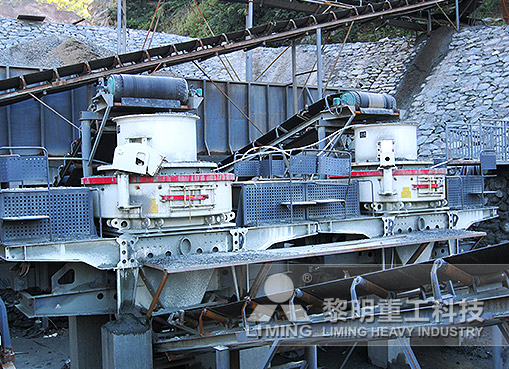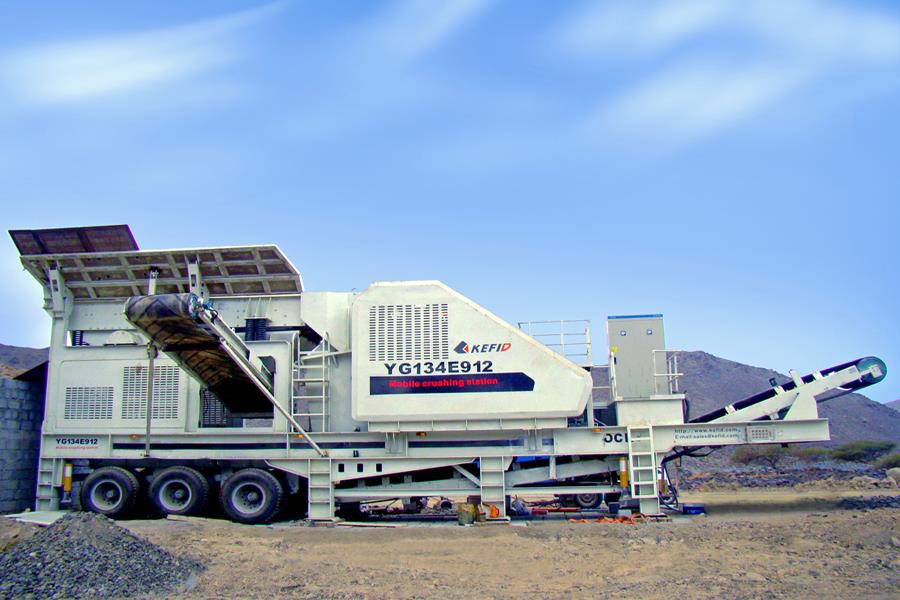

A 1,000-ton-per-hour stone crushing production line requires four key systems: feeding, crushing and sand making, screening, and sorting. From coarse crushing in the jaw crusher to fine crushing in the ball mill, aggregates of varying particle sizes ar
A 1,000-ton-per-hour stone crushing production line requires four key systems: feeding, crushing and sand making, screening, and sorting. From coarse crushing in the jaw crusher to fine crushing in the ball mill, aggregates of varying particle sizes are precisely screened to meet the requirements of C15-C30 concrete.
The complete production line consists of four systems: feeding, crushing and sand making, screening, and sorting.
1. Pretreatment
This stage primarily uses hammering to pre-crush large aggregates from the raw sand and gravel aggregate ore. It also sorts out debris unsuitable for crushing, removing waste wood, plastic, and other impurities to facilitate subsequent processing. A primary magnetic separation is also performed to remove scrap iron from the aggregate.

2. Crushing and Sand Making
First, a jaw crusher performs primary crushing of the raw material. A vibrating feeder feeds the material evenly. The jaw crusher's jaw motion breaks the large aggregates into smaller particles. The crushed material is then transported to a transfer pile via a conveyor. The material can then be finely crushed using a sand making and shaping machine. The resulting sand and gravel aggregates are uniform in particle size.
III. Primary Screening
In this stage, a circular vibrating screen is used to screen the coarsely crushed concrete aggregate into lumps sized 0-40 mm and crushed aggregate sized 0.5 mm or less. The 5-40 mm coarse aggregate can be collected and directly used in the production of standard C15-C20 concrete. The fine aggregate can be transported to a transfer pile for further processing.
IV. Secondary Crushing and Screening
A ball mill can be used for secondary crushing to further crush the fine aggregate. Secondary screening separates the crushed aggregate into high-quality recycled aggregate sized 5-20 mm for use in C25-C30 concrete production. Tertiary screening separates high-quality recycled fine aggregate sized 0.15 mm to 5 mm and fine powder sized 0.15 mm or less.
Previous: SMP Crusher
Next: SMP Crusher

A 1,000-ton-per-hour stone crushing production line requires four key systems: feeding, crushing and sand making, screening, and sorting. From coarse crushing in the jaw crusher to fine crushing in the ball mill, aggregates of varying particle sizes ar
A 1,000-ton-per-hour stone crushing production line requires four key systems: feeding, crushing and sand making, screening, and sorting. From coarse crushing in the jaw crusher to fine crushing in the ball mill, aggregates of varying particle sizes are precisely screened to meet the requirements of C15-C30 concrete.
The complete production line consists of four systems: feeding, crushing and sand making, screening, and sorting.
1. Pretreatment
This stage primarily uses hammering to pre-crush large aggregates from the raw sand and gravel aggregate ore. It also sorts out debris unsuitable for crushing, removing waste wood, plastic, and other impurities to facilitate subsequent processing. A primary magnetic separation is also performed to remove scrap iron from the aggregate.

2. Crushing and Sand Making
First, a jaw crusher performs primary crushing of the raw material. A vibrating feeder feeds the material evenly. The jaw crusher's jaw motion breaks the large aggregates into smaller particles. The crushed material is then transported to a transfer pile via a conveyor. The material can then be finely crushed using a sand making and shaping machine. The resulting sand and gravel aggregates are uniform in particle size.
III. Primary Screening
In this stage, a circular vibrating screen is used to screen the coarsely crushed concrete aggregate into lumps sized 0-40 mm and crushed aggregate sized 0.5 mm or less. The 5-40 mm coarse aggregate can be collected and directly used in the production of standard C15-C20 concrete. The fine aggregate can be transported to a transfer pile for further processing.
IV. Secondary Crushing and Screening
A ball mill can be used for secondary crushing to further crush the fine aggregate. Secondary screening separates the crushed aggregate into high-quality recycled aggregate sized 5-20 mm for use in C25-C30 concrete production. Tertiary screening separates high-quality recycled fine aggregate sized 0.15 mm to 5 mm and fine powder sized 0.15 mm or less.
Previous: SMP Crusher
Next: SMP Crusher
 Shibang Chongqing 1,000-ton-per-hour aggregate processing project: setting a benchmark for efficient and environmentally friendly sand and gravel production
Shibang Chongqing 1,000-ton-per-hour aggregate processing project: setting a benchmark for efficient and environmentally friendly sand and gravel production What are the reasons for slow discharge of sand making machine?
What are the reasons for slow discharge of sand making machine? How to choose equipment for Shibangs 500 tons per hour tuff sand and gravel production line? What are the advantages of the project?
How to choose equipment for Shibangs 500 tons per hour tuff sand and gravel production line? What are the advantages of the project? How to reduce the failure rate of crusher
How to reduce the failure rate of crusher What are the reasons for mobile crusher blockage?
What are the reasons for mobile crusher blockage? Shibang Chongqing 1,000-ton-per-hour aggregate processing project: setting a benchmark for efficient and environmentally friendly sand and gravel production
Shibang Chongqing 1,000-ton-per-hour aggregate processing project: setting a benchmark for efficient and environmentally friendly sand and gravel production What are the reasons for slow discharge of sand making machine?
What are the reasons for slow discharge of sand making machine? How to choose equipment for Shibangs 500 tons per hour tuff sand and gravel production line? What are the advantages of the project?
How to choose equipment for Shibangs 500 tons per hour tuff sand and gravel production line? What are the advantages of the project? How to reduce the failure rate of crusher
How to reduce the failure rate of crusher What are the reasons for mobile crusher blockage?
What are the reasons for mobile crusher blockage?